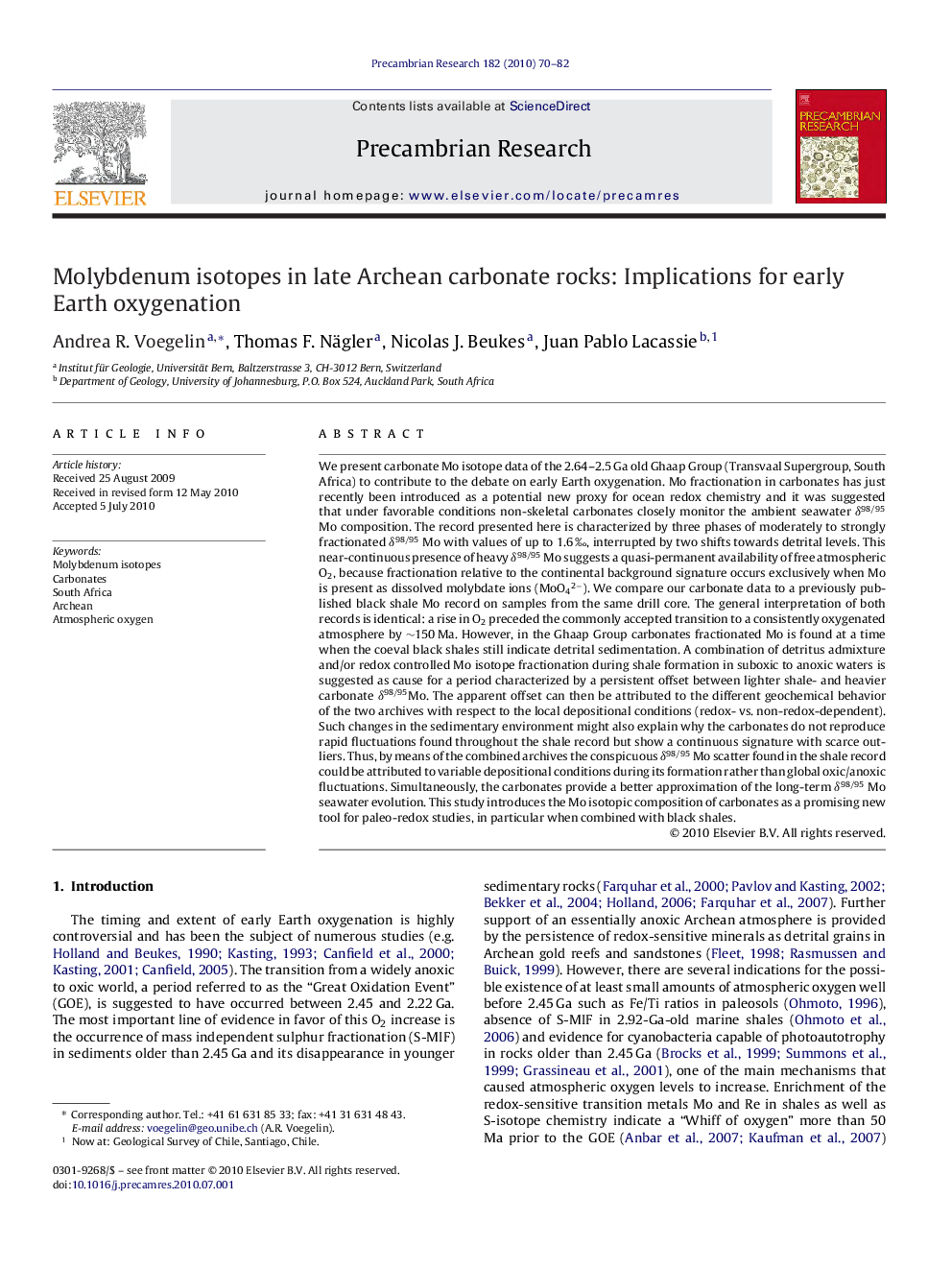| کد مقاله | کد نشریه | سال انتشار | مقاله انگلیسی | نسخه تمام متن |
|---|---|---|---|---|
| 4723693 | 1639675 | 2010 | 13 صفحه PDF | دانلود رایگان |

We present carbonate Mo isotope data of the 2.64–2.5 Ga old Ghaap Group (Transvaal Supergroup, South Africa) to contribute to the debate on early Earth oxygenation. Mo fractionation in carbonates has just recently been introduced as a potential new proxy for ocean redox chemistry and it was suggested that under favorable conditions non-skeletal carbonates closely monitor the ambient seawater δ98/95 Mo composition. The record presented here is characterized by three phases of moderately to strongly fractionated δ98/95 Mo with values of up to 1.6 ‰, interrupted by two shifts towards detrital levels. This near-continuous presence of heavy δ98/95 Mo suggests a quasi-permanent availability of free atmospheric O2, because fractionation relative to the continental background signature occurs exclusively when Mo is present as dissolved molybdate ions (MoO42−). We compare our carbonate data to a previously published black shale Mo record on samples from the same drill core. The general interpretation of both records is identical: a rise in O2 preceded the commonly accepted transition to a consistently oxygenated atmosphere by ∼150 Ma. However, in the Ghaap Group carbonates fractionated Mo is found at a time when the coeval black shales still indicate detrital sedimentation. A combination of detritus admixture and/or redox controlled Mo isotope fractionation during shale formation in suboxic to anoxic waters is suggested as cause for a period characterized by a persistent offset between lighter shale- and heavier carbonate δ98/95Mo. The apparent offset can then be attributed to the different geochemical behavior of the two archives with respect to the local depositional conditions (redox- vs. non-redox-dependent). Such changes in the sedimentary environment might also explain why the carbonates do not reproduce rapid fluctuations found throughout the shale record but show a continuous signature with scarce outliers. Thus, by means of the combined archives the conspicuous δ98/95 Mo scatter found in the shale record could be attributed to variable depositional conditions during its formation rather than global oxic/anoxic fluctuations. Simultaneously, the carbonates provide a better approximation of the long-term δ98/95 Mo seawater evolution. This study introduces the Mo isotopic composition of carbonates as a promising new tool for paleo-redox studies, in particular when combined with black shales.
Journal: Precambrian Research - Volume 182, Issues 1–2, September 2010, Pages 70–82